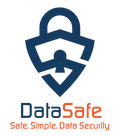Migrating your financial operations to QuickBooks Cloud Solutions can be a game-changer in today’s dynamic business domain. It offers the flexibility, accessibility, and robust features businesses need to thrive. However, the migration process can be complex, and pitfalls can arise if mismanaged.
Read on to understand the essential steps and tips for a smooth transition to QuickBooks Cloud Solutions.
QuickBooks Desktop vs. QuickBooks Online
QuickBooks Desktop is installed on your computer, necessitating manual updates and involving a one-time purchase cost. It suits individual users or small local teams but entails manual data backups and presents limited integration options.
In contrast, QuickBooks Online is accessible from anywhere with an internet connection, automatically updated via subscription-based pricing, and tailored for collaborative use among multiple users from diverse locations. It provides automatic cloud-based data backups with extensive integration capabilities and better mobile accessibility. It scales effectively for businesses of all sizes and offers comprehensive customer support and a broader online community.

Tips for Successful Migration to QuickBooks Cloud Solutions
Switching to QuickBooks Cloud Solutions has the potential to revolutionize how businesses manage their finances. This move to cloud-based accounting offers many advantages, including improved accessibility, enhanced collaboration, and greater scalability.
It’s no surprise that numerous organizations are embracing this shift. However, proper planning is essential to guaranteeing a seamless and prosperous migration. Let us navigate this process and harness the full potential of QuickBooks Cloud Solutions for your business.
Setting the Stage for Success
It’s crucial to lay a solid foundation before starting your migration journey. Here are some steps to ensure a smooth initiation:
Assess Your Current State
Begin by conducting a thorough assessment of your existing financial system. Identify pain points, areas for improvement, and the specific needs of your business. This evaluation will help you tailor your migration strategy to address these unique requirements.
Choose the Right QuickBooks Plan
QuickBooks offers a variety of plans tailored to different business sizes and needs. Select the plan that aligns with your organization’s goals and budget. Consider factors like the number of users, features required, and scalability.
Data Cleanup and Organization
Before migrating, tidy up your financial data. Remove duplicates, correct errors, and ensure that your data is well-organized. This step will prevent unnecessary complications during the migration process.
Data Migration Strategies
Now that you’ve set the stage, it’s time to delve into the heart of the migration process. Proper data migration is crucial for a successful transition to QuickBooks Cloud Solutions.
Backup Your Data
Always create a backup of your financial data before initiating the migration. This precautionary step ensures you have a safety net in case of unexpected issues.
Choose the Right Migration Method
QuickBooks provides various migration options, including manual data entry, CSV file import, and third-party migration tools. Carefully choose the method that best suits your needs and resources.
Data Mapping
Map your existing data to the corresponding fields in QuickBooks. This mapping ensures that your information is transferred accurately. Pay close attention to details to prevent data discrepancies.
Seamless Integration
Once you migrate your data, the next phase is seamlessly integrating QuickBooks Cloud Solutions into your daily operations.
User Training
Invest in training for your team. Familiarity with QuickBooks features will maximize its utility and minimize errors. The software itself offers comprehensive training resources and tutorials.
Customize Your Setup
Tailor QuickBooks to match your specific workflow and business needs. Customize reports, templates, and settings to streamline your financial processes.
Test and Validate
Before going live, conduct extensive testing to ensure that all features and functionalities are working as expected. This step lets you identify and resolve issues before they impact your day-to-day operations.
Security and Compliance
The security of your financial data is paramount. QuickBooks Cloud Solutions offers robust security features, but taking additional precautions is essential.
User Access Control
Implement strict user access controls to restrict access to sensitive financial data. Only authorized personnel should have access to critical financial information.
Regular Updates and Backups
Stay up to date with QuickBooks updates and perform regular data backups. This practice ensures your protection against data loss and security vulnerabilities.
Ongoing Support and Optimization
Your migration to QuickBooks Cloud Solutions continues after the transition. Continuous support and optimization are vital to reaping the full benefits of the platform.
Seek Professional Assistance
Consider engaging a QuickBooks Solutions Provider or a certified accountant for ongoing support and advice. Their expertise can help you optimize your financial processes.
Automation
QuickBooks offers convenient automation features to help businesses efficiently manage their accounts receivable. These features ensure you get paid on time without the hassle of manual invoicing and payment collection.
Recurring Invoices
With QuickBooks, you can set up recurring invoices for your clients. This means your clients will automatically receive an invoice on a predictable schedule. You won’t need to remember to send invoices manually.
Recurring Credit Card Payments
QuickBooks also allows you to automate credit card payments from your clients. This facility enables the transaction to be automatically processed on the scheduled date, eliminating the need for them to remember to make payments.
Overdue Payment Reminders
To prevent late payments, QuickBooks can send automated reminders to your clients when their invoices become past due. This gentle nudge helps ensure timely payments.
Imagine you run a marketing agency and provide monthly social media management services to a client. Instead of manually creating and sending invoices at the end of each month, you can set up a recurring invoice in QuickBooks. Just input the necessary details, including payment options, and select “make recurring.” QuickBooks will care for the rest, ensuring your client receives their bill promptly.
To take automation a step further, consider setting up recurring payments. This way, you’ll effortlessly collect the money owed to you regularly, benefiting both you and your clients. It’s a win-win solution that streamlines your cash flow management.
Monitor and Analyze
Regularly monitor your financial data and use QuickBooks’ reporting tools to gain insights into your business’s performance. This data-driven approach can help you make informed decisions.
Migrating to QuickBooks Cloud Solutions is a significant step towards enhancing your business’s financial efficiency and agility. With careful planning, proper data migration, and ongoing support, you can unlock the full potential of this powerful platform. Remember that success lies in the details, so take your time and don’t hesitate to seek expert guidance when needed.
QuickBooks Cloud Solutions ensures a successful migration and positions your business for sustained growth and prosperity in the digital age. If you optimize your account process with QuickBooks Cloud solutions, Data Safe Group LLC experts can help you. Contact us now to learn more.

